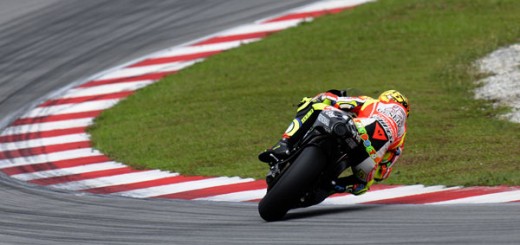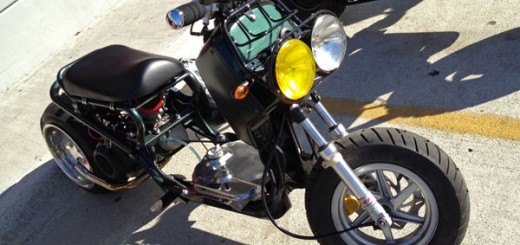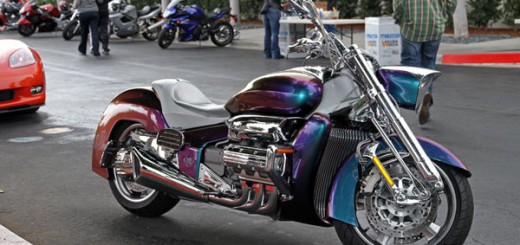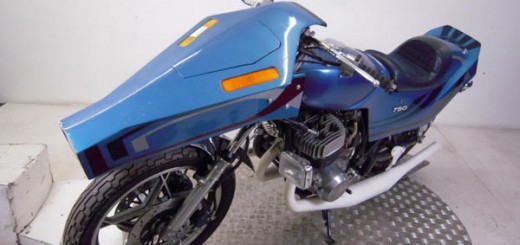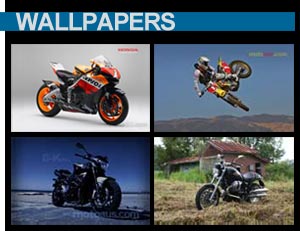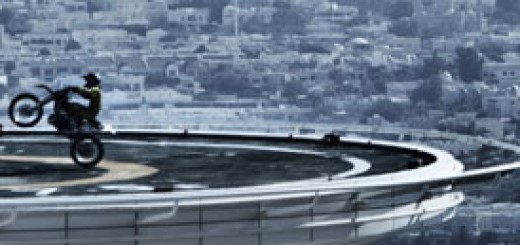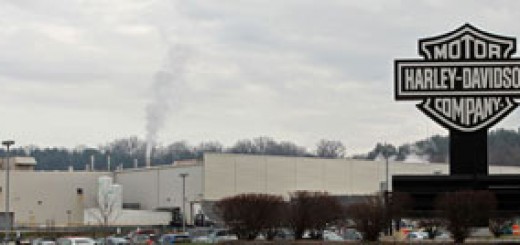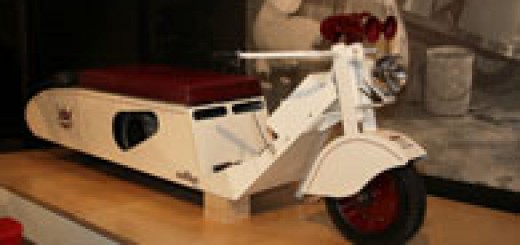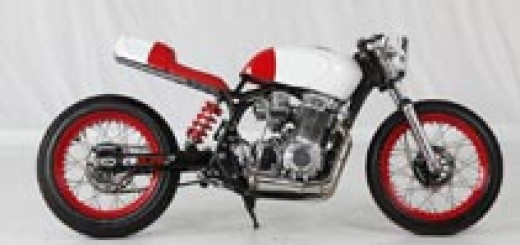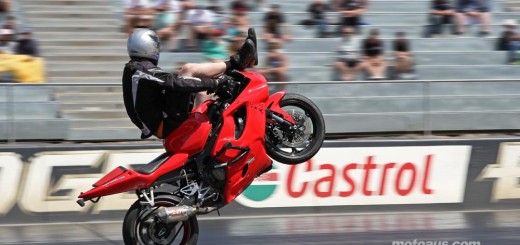Suzuki B-King Ride Impression
 It’s not often a show concept bike makes it almost unchanged to the showroom floor. Suzuki havent let us down, with the production version of the controversial styled 1340cc B-King.
It’s not often a show concept bike makes it almost unchanged to the showroom floor. Suzuki havent let us down, with the production version of the controversial styled 1340cc B-King.

UPDATE: Read our full review including dragstrip test of the B-King – click here
It’s not often a show concept bike makes it almost unchanged to the showroom floor. Suzuki havent let us down, with the production version of the controversial styled B-King losing its supercharger, fingerprint recognition, alarm, and massive front tyre since it first appeared at the Tokyo Show in 2001. What it has picked up though, is a 1340cc Titanium valved monster motor, ripped from the Hayabusa, and mapped to perfection for this style of bike. More suprisingly, it picked up quality brake and suspension components, something often found lacking in a naked bike, usually left off along with the top end power. Not so with the B-King.
The first thing that is noticed, or discussed with the B-King is the exhausts. There’s no escaping it, you can even see them from the front of the bike. Actually it’s the exhaust covers you can see, the muffler itself is a one piece item under the seat, but they protrude proudly from the rear, like a pair of rocket engines. The bike draws more mouth agape stares from the general public than any other bike I recall since maybe Suzukis 1981 Katana. Interestingly that bike was canned by the general bike population at the time for its futuristic styling. Will the B-King one day be as loved as the Katana is now?

From the front, the tank and air scoops dominate, seemingly a metre wide. Sitting on the bike, it seems a little smaller. The lack of a fairing or large dash, makes the B-King feel much shorter than the slightly smaller Hayabusa. Once underway, it shrinks again, its ease of riding, and flickability means it feels a lot lighter than it is. With the B-King it always was, and always will be about the motor. And what a motor it is. Turbine like power, and almost perfectly mapped from the factory, it will pull smoothly away from 1000 rpm and stretch your arms out of their sockets right up to its redline, without a stumble. Suzuki say the motor is identical to the Hayabusa, apart from induction and exhaust, so the quoted power figure of around 170hp- about 10 less than the Busa – would support the theory that its mapped differently.
It still has the SDTV (Suzuki Dual Throttle Valve) dual injector fuel injection. It also has the PVD (physical vapor deposit applied to piston rings) like the Busa, plus it adds the SET (Suzuki Exhaust Tuning) valve. Lets not forget the S-DMS (Suzuki Drive Mode Selector) though, which feels like it drops about 20-30% of the power in B mode. I preferred to just leave it in Mode A, in which the bike goes VFF (Very Fn Fast).

I was unable to verify where the bike inducts its air, Suzuki say it has ram air, but the huge ducts on the side of the tank appear to be dummy scoops, or at least fairly basic at collecting air. Not that ram air would matter too much, as the bike hardly lacks power. With with absolutely no screen for wind protection, I doubt you’d have much fun at 300km/h. Apparently the bike is top speed limited to around 250km/h, and for once I’d say it’s a good idea.
The small dash pod mounted inside the headlight shell is dominated by the large round analogue tacho. To the right is speed in digital numbers above a handy gear position indicator, to the left a brace of warning lights. Temperature and Fuel levels are shown in digital bar graph form within the tacho. Unfortunately there is no shift light for would be drag racers. The top of the fuel tank houses the ignition switch, the Mode selector, and buttons to scroll through dash functions which include twin tripmeters, clock, maintenance interval, running time and average speed.

Once underway, the first thing you notice is how smooth it is, the second is how surprisingly agile it feels given its size. Every person who rode the bike commented on this. Compared to the Series 1 Hayabusa, it feels more like a GSR600. A big fat powerful GSR600.
With a longer wheelbase than a Hayabusa the B-King rips wheelies off the throttle with ease, but feels more predictable than the Busa. The brakes are powerful, but not overly grabby. The first corner you tip into will be a delight, if you are expecting cruiser style handling.
 The B-King has an entirely different frame and swingarm to the Hayabusa, with the most noticable difference being its longer 1525mm wheelbase. Up front fully adjustable KYB forks are fitted, and the 120/70 Dunlop Qualifier is slowed by 310mm discs by a pair of four piston Nissin calipers, radially mounted. The rear sports a 200 series tyre, although this appears small underneath those gargantuan exhausts. Rear shock is fully adjustable as well, compression, rebound damping and spring preload.
The B-King has an entirely different frame and swingarm to the Hayabusa, with the most noticable difference being its longer 1525mm wheelbase. Up front fully adjustable KYB forks are fitted, and the 120/70 Dunlop Qualifier is slowed by 310mm discs by a pair of four piston Nissin calipers, radially mounted. The rear sports a 200 series tyre, although this appears small underneath those gargantuan exhausts. Rear shock is fully adjustable as well, compression, rebound damping and spring preload.
I had read a range of opinions on the B-King before I rode it, the common thread was negative from those who hadn’t ridden it, and positive from those who had. I’m definitely joining the positive team, in fact I found it hard to fault for my tastes. Even the styling grew on me, to the point I now find it most attractive, given its uniqueness. I wondered if the bike will lose some of its character with the exhaust changed. Of course it would also lose up to a reported 20kgs of weight if changed to a Ti system, an amazing amount.
The smallish 16.5 litre size tank is a minor disappointment for me, I hate having to stop to refuel, but its 200km plus range – depending on riding style- would be fine for all but long distance touring, something the bike is not aimed at. I can see a small screen becoming a common aftermarket addition for those who want to run the highways, along with the usual exhaust and PC mods for the hoons. Although its no 600 Supersport contender, the suspension and brakes wont require much attention for weekend fun riding, and only the bravest or most foolish will go looking for more horsepower.

The bike comes in two colour schemes, All Black, and a Charcoal/Silver. Each colour scheme has differently coloured chassis components, the Silver version with matching silver swingarm for example. RRP is currently $18,990.00 in Australia, $400 up on the 2008 Hayabusa.
If the styling is something you love, like,or even can live with,this is a bike that will appeal to a wide range of buyers from cruisers, to weekend corner carvers, and especially power junkies, but perhaps only after they ride it. It’s that good!
Click image for a full ride test on the B-King

Engine |
1,340cc, 4-stroke, 4-cylinder, DOHC, 16-valve, liquid-cooled |
Starter |
Electric |
Transmission |
6-speed |
Front suspension |
Inverted telescopic, 43mm titanium nitrided inner tube, fully adjustable rebound/compression/preload Progressive linkage, fully adjustable |
Rear suspension |
rebound/compression/preload |
Front brakes |
Disc brake, twin |
Rear brakes |
Disc brake |
Seat height |
805mm |
Wheelbase |
1,5285mm |
Length |
2,220mm |
Width |
800mm |
Height |
1,085mm |
Dry weight |
235kg |
Fuel capacity |
16.0L |
Colours |
Grey / Silver, Matt Black |
Warranty |
Two-year unlimited kilometre warranty |




